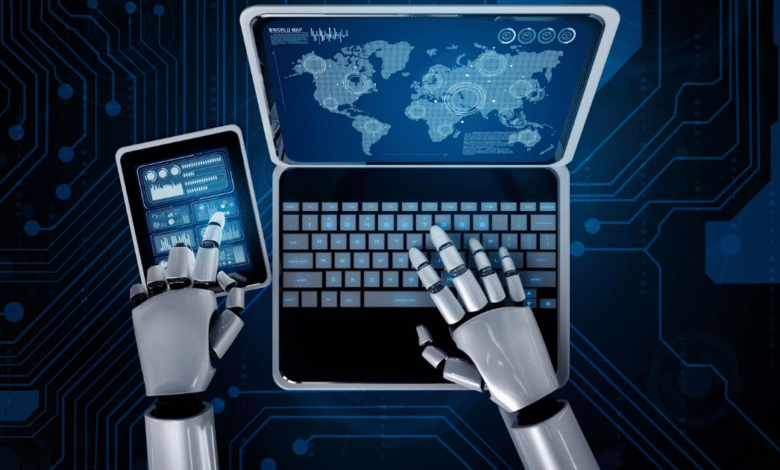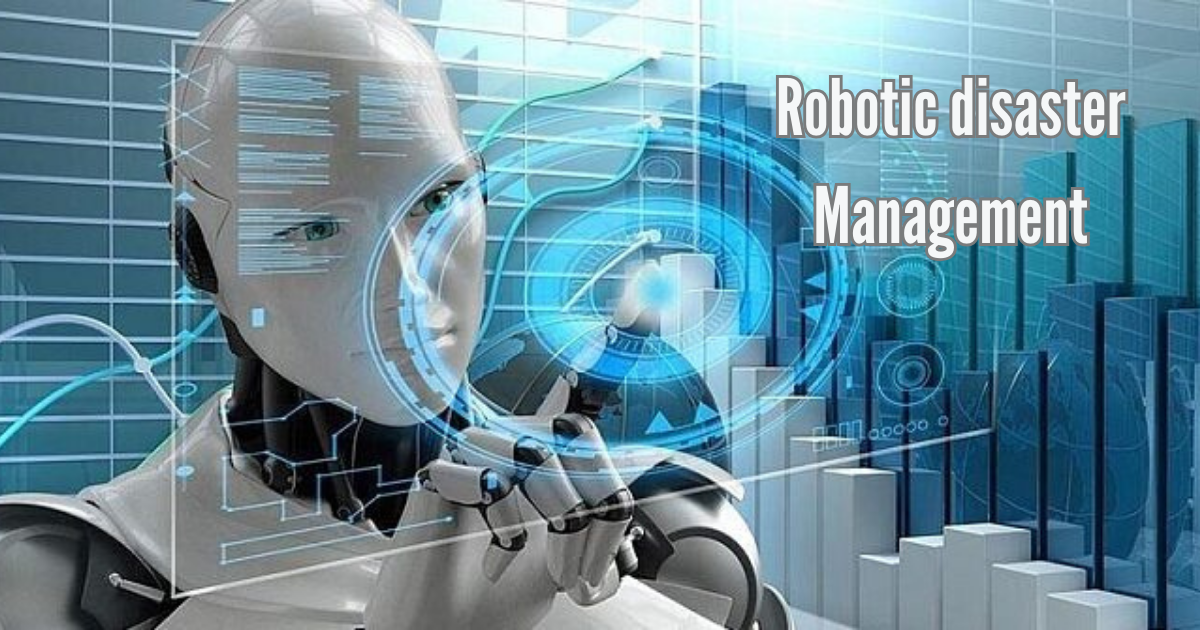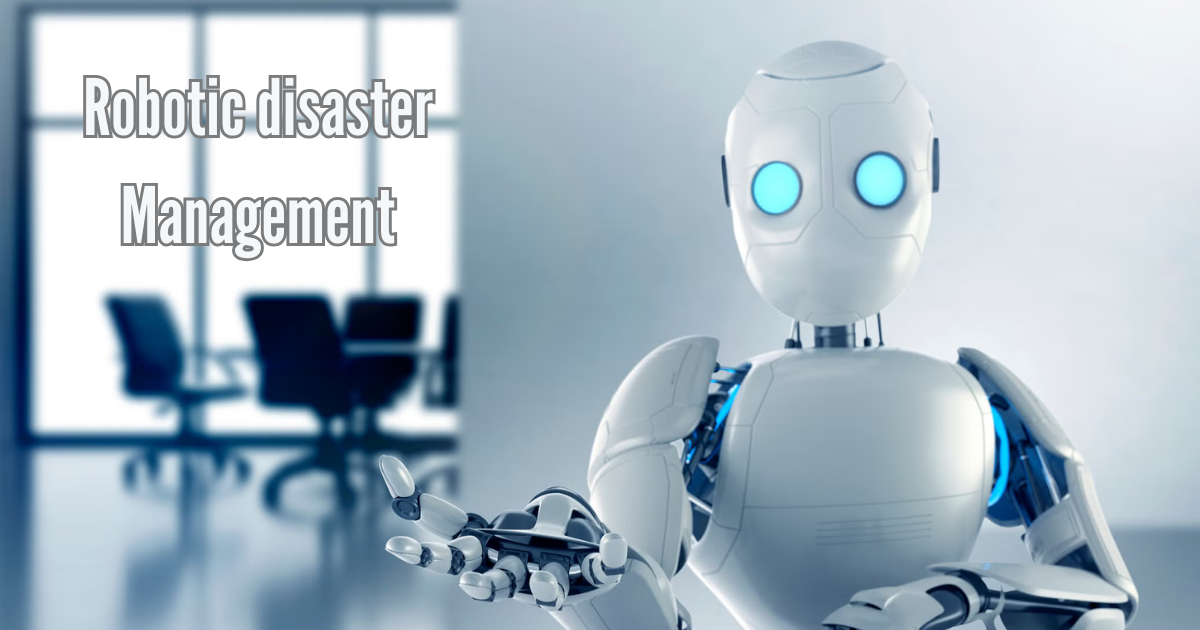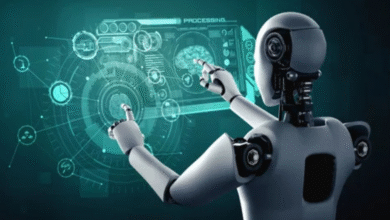
Robotic Disaster Management
Any instant can bring disasters from natural or built environments that cause damage throughout areas, along with human fatalities. Facing situations of high stakes, response needs to happen rapidly and efficiently. Emergency management procedures depend on human first responders to manage disasters, yet these professionals encounter major difficulties when entering harmful areas during high-pressure situations. The deployment of robotics technology now provides exceptional solutions to develop improved disaster response capabilities and post-disaster recovery activities.
Robotic Disaster Management exists because of the integration of robotics technology with artificial intelligence (AI) and established disaster response plans. Robots operate in hazardous zones where humans cannot safely exist, since they provide current site data and automated responses to conduct advanced rescue missions. Disaster management approaches are undergoing revolutionary change through these technologies by allowing responders to deliver safe and enhanced operations that save lives and decrease damage.
The Role of Robotics in Disaster Management
Search and rescue operations, together with damage assessment, as well as hazardous material handling and recovery activities, are the primary objectives for which disaster management agencies employ robotic solutions. Acting in dangerous surroundings such as earthquake-ravaged buildings, flooded territory, and chemical contamination spots is invaluable in rescue operations. Below are particular regions where robotic technologies drive disaster response improvement:
1. Search and Rescue Operations
Time sensitivity appears as the prime factor when performing disaster response search and rescue operations. The main emergency task involves finding people who survived buildings that collapsed or dangerous locations. This challenge becomes manageable because robots that contain cameras, together with sensors, alongside advanced tools, allow quick traversal of areas humans cannot or should not reach.
Natural disaster response teams use drones extensively as part of search operations that happen after earthquakes, hurricanes, and floods. Thermal imaging camera systems mounted on drones scan areas to detect heat signatures, which leads to survivor detection even in collapsed buildings or dense forests. The capabilities of ground robots that operate during urban disaster scenarios enable them to move through debris while accessing confined areas in order to locate survivors inside. The application of tools to these robots enables them to cut through obstacles and lift heavy objects, while also providing medical assistance.
Some search and rescue missions utilize Spot robot dogs developed by Boston Dynamics as part of their operations. Robot dogs with agile capabilities enable real-time data and video streaming while navigating through difficult terrains, including rubble and stairs, for human searcher support.
2. Hazardous Material Handling
Robotic Disaster Management beneficiaries from robotics applications include the proper handling of hazardous materials through hazmat operations. Dangerous substances and radiation expose first responders during their work at chemical spills or nuclear accidents following industrial explosions. Hazardous environments become suitable locations for robots that function without endangering human personnel.
The examination of chemical spills through robots using specialized sensors helps to both detect hazardous substances and determine their spread over air and soil surfaces. The detection of radiation levels, together with the assessment of damaged building structures and hazards neutralization, belongs to the capabilities of robotic machines.
After the Fukushima nuclear disaster, robots from Japan evaluated both radiation levels and inspected damaged reactors to collect data that protected human existence. The machines operated in territories with intense radiation while collecting test samples, thus scientists and engineers received crucial data to determine the cleanup approach.
3. Damage Assessment and Infrastructure Inspection
Emergency responders must evaluate immediately the total damage sustained by bridges, together with roads, as well as power lines and communication networks, after any destructive event takes place. The performance of these evaluations depends heavily on robotic technology, which operates efficiently and at high speeds.
Drone technology serves extensively in damage assessment because aerial video footage of disaster sites becomes possible with drone operations. Drones perform rapid surveillance of disaster areas while generating detailed visual information, which enables emergency response organizations to inspect the extent of the wreckage and find critical locations and prioritized response sites.
The combination of sensors installed on robots permits infrastructure inspection through bridges and dams to spot suspected damage that can threaten infrastructure safety. Autonomous robots serving as inspection platforms operate safely in places where humans cannot operate because of dangerous conditions or limited reach; therefore, they cut down reaction time for handling safety threats.
4. Logistical Support and Supply Delivery
Logistical problems arise frequently after disaster events. Widespread delivery services for food and medicine, as well as equipment, demand access to problematic roads and flooded areas and locations with structural damage. Autonomous delivery systems operated through Robotic Disaster Management technology can surmount such obstacles since they possess the capability to traverse difficult terrain.
The use of drones represents a strategic method to deliver needed supplies into unreachable geographical zones. The UAVs that carry lightweight packages can fly over obstructions and flooded terrain to provide supplies to disaster victims. Robotics enables ground robots to move medical supplies together with essential goods through disaster regions while helping both rescue teams and survivors.
Autonomous vehicles, which include self-driving trucks as well as robots designed for cargo transportation, serve to deliver large quantities of supplies to disaster areas. The robotic devices operate without daily breaks to distribute items into spaces where typical transportation systems remain unavailable.
5. Post-Disaster Recovery and Cleanup
After an emergency threat has been neutralized, the recovery and cleanup effort starts. Sanitation operations begin by clearing away debris before controllers reinstate vital infrastructure systems to make areas collapse-safe for rebuilding. Robotics systems enable quicker rubble-clearing operations because they lower personnel requirements for performing dangerous site clean-up tasks.
University robots used for debris removal enable personnel to operate safely while clearing away rubble and hazardous materials, thus freeing workers to undertake post-disaster rebuilding works. Autonomous bulldozers, together with excavators, operate alongside robots equipped with gripping arms to perform road cleanup and infrastructure recovery, which also includes safe material handling functions.
The operations of robots extend to environmental cleanup functions, where they remove oil spills and clean contaminated water sources. The autonomous nature of these robots enables recovery teams to concentrate on difficult operations because they can operate independently under difficult circumstances.
6. Artificial Intelligence and Machine Learning Integration
The implementation of artificial intelligence, together with machine learning, in Robotic Disaster Management systems enhances their capability. The processing of data from robots occurs through video footage, sensor readings, and environmental data inputs to allow algorithms to determine risk levels for real-time human responder decisions.
The drones perform independent flight execution because they have AI capabilities enabling them to seek survivors following programmed algorithms. AI-controlled image recognition systems use aerial images to find disaster location markings before building priority lists for emergency personnel.
All operational functions of predictive disaster management depend on machine learning algorithms to perform their tasks. AI systems generate expected disaster areas through data analysis of historic records, as well as weather data and pertinent variables, to provide teams with proactive preparation opportunities for rescue operations.
Conclusion
Robotic Disaster Management has revolutionized emergency response through its creation of advanced solutions to resolve difficult issues. Operational robots function in hazardous zones to protect personnel while performing their tasks with enhanced speed and security, thus protecting human lives and diminishing both physical harm and emergency response duration. The progress of technology will lead to robots taking a central position in disaster management, which will create better coordinated responses to an expanding number of natural and human-made disasters all over the world.



